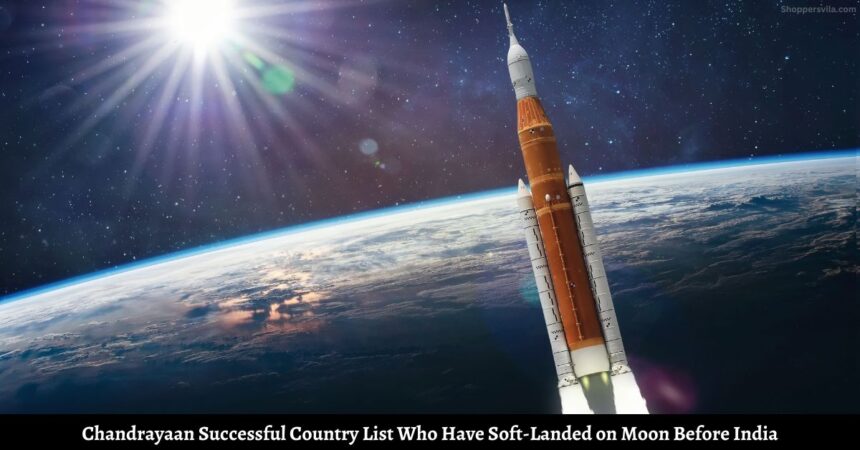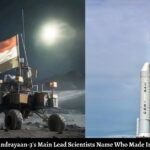India has etched its name in the history books by becoming only the fourth nation to successfully soft-land a spacecraft on the lunar surface. The Indian Space Research Organisation (ISRO) achieved this remarkable feat with its Chandrayaan-3 mission on August 23, 2023. This monumental accomplishment underscores India’s prominence as a leading space-faring nation. As we celebrate this proud moment, let’s explore the elite group of countries that have conquered the immense technological challenges of gently landing a spacecraft on the Moon.
In Short
- On August 23, 2023, India’s Chandrayaan-3 became the fourth spacecraft to soft-land on the Moon’s surface.
- Achieving soft lunar landings requires precision technology to counter the Moon’s lack of atmosphere.
- Before India, Russia, USA, and China had undertaken successful soft Moon landings.
- Chandrayaan-3 has made India the first country to land on the lunar south pole.
- The mission highlights India’s stellar and cost-effective engineering capabilities.
- India is gearing up for more landmark space missions including manned flights.
What Makes Soft Lunar Landings So Challenging?
Executing controlled and safe lunar landings requires mastering complex procedures and overcoming the Moon’s tricky environment. The lack of an atmosphere on the Moon eliminates air resistance or drag that could slow the lander’s descent. Without installing robust retro-rockets, the spacecraft would smash into the surface at extremely high speeds. The lander must undertake precision maneuvers to gently lower itself using reverse thrust. Even minor errors in trajectory or thruster firing could result in mission failure. Hence, soft-landing on the Moon remains a pinnacle of technological achievement.
Chandrayaan Success Country List Who Already Have Soft-Landed on the Moon Before India
As of 2023, only three countries apart from India have successfully soft-landed spacecraft on the lunar surface – Russia, the United States, and China. Russia holds the distinction of being the pioneer, while the US has undertaken the most soft landings. Let’s take a closer look at the achievements of each nation.
Russia Led the Way by Soft-Landing in 1966
The former Soviet Union first accomplished a lunar landing in 1959. But it was its Luna 9 probe in 1966 that etched Russia’s name in history books by undertaking humanity’s maiden soft touchdown on the Moon. This pathbreaking success was followed by more milestone Russian missions that expanded lunar exploration. Russia’s indelible contributions as the first nation to solve the puzzles of gently landing on the Moon are rightfully acknowledged.
United States Dominates with Over 11 Soft Landings
Shortly after Russia’s inaugural soft landing in 1966, the United States matched the feat that same year with its Surveyor 1 spacecraft. While Russia led initially, the US rapidly outpaced all nations by undertaking over 11 soft lunar landings to date using its Surveyor and Apollo programs. The pinnacles of US dominance are the six Apollo missions that safely landed astronauts on the Moon between 1969-1972. As the only country to land humans on the lunar surface, the US retains its position as the benchmark for lunar exploration.
China’s Recent Missions Ushered Its Arrival
China announced its arrival as a superpower in space in 2013 when its Chang’e 3 spacecraft softly touched down on the Moon, signifying the first lunar landing since 1976. The most remarkable Chinese mission was Chang’e 4 in 2019 which accomplished mankind’s first-ever landing on the far side of the Moon. This ability to navigate the difficulties of landing on the Moon’s unexplored far side underscores China’s engineering expertise. While late to enter the fray, China is adeptly marching forward.
Why is India’s Chandrayaan-3 Mission Historically Significant?
India was widely acclaimed for its bold attempt at soft-landing Chandrayaan-2 Vikram lander in 2019. Though it came tantalizingly close, Vikram’s crash-landing did not diminish the audacity of ISRO’s attempt. Now in 2023, Chandrayaan-3 has fulfilled that ambitious vision by gently landing on the lunar south pole. Beyond just attaining a soft landing, Chandrayaan-3’s south pole location makes India the first nation to land in this unexplored territory. Let’s see why this is historically significant.
India is the First Nation to Land on Lunar South Pole
The south pole of the Moon holds special value, as it is home to craters with permanent shadows that scientists believe may contain water ice. This presence of water makes the south pole a highly promising location for future lunar habitation. Hence, India has stolen a march over other nations chasing lunar water resources by becoming the first country to land a spacecraft in this region.
Low-Cost Mission Highlights Frugal Engineering
By achieving its aims with a remarkably low budget of around $75 million, the cost-effective Chandrayaan-3 highlights India’s global reputation for frugal engineering. Compare this to USA’s Artemis program costing over $90 billion. The success of its cost-efficient missions adds to India’s appeal as a hub for affordable space technology and boosts ISRO’s credentials as a leader in sustainable space exploration.
Lunar Rover Can Unlock Mysteries of Moon’s South Pole
Chandrayaan-3’s Pragyan rover, designed to operate for one lunar day, can now undertake pivotal on-site analysis of the south pole’s terrain. As the first rover landed by any nation in this uncharted region, its potential findings on the composition and origins of lunar water ice could have tremendous scientific significance that adds to human knowledge.
What Lies Ahead for India in the New Space Race?
By planting its flag on the lunar south pole, India has made its ambitions clear in the 21st century race for lunar colonization. Building on Chandrayaan-3’s success, ISRO is gearing up for even more ambitious interplanetary missions. The next goal is landing humans on the Moon by the end of this decade. India is also developing its own space station and aims to launch its first manned spaceflight by 2030. Clearly, India now possesses the credentials to be regarded as one of the world’s leading spacefaring nations.
The Chandrayaan-3 lunar landing adds another proud chapter in India’s spacefaring history. As only the fourth nation to master the complexities of softly landing on the Moon, India has earned its place at the elite table. The path ahead is filled with exciting possibilities as India harnesses its skilled engineers to undertake more landmark missions that will benefit all humanity. Just as the Moon has acquired new importance in the 21st century, India too is rising as a dominant power with limitless spacefrontiers to conquer.
Frequently Asked Questions (FAQ)
1. Which countries have successfully soft-landed on the moon before India?
Only three countries had soft-landed on the moon before India – Russia, the United States, and China. Russia was the first to do so in 1966, followed by the US the same year. China soft-landed in 2013.
2. How many soft lunar landings has India achieved before Chandrayaan-3?
Chandrayaan-3 is India’s first successful soft lunar landing. India had attempted a soft landing with Chandrayaan-2 in 2019, but it crash-landed on the surface.
3. What makes soft-landing on the moon so difficult?
The lack of atmosphere and gravity on the moon makes controlled and safe landings very challenging. The lander has to precisely and gently lower itself using reverse thrusts to avoid crashing. Even small errors can doom the mission.
4. What is special about Chandrayaan-3 landing on the lunar south pole?
It makes India the first country to land in the south pole region, which is scientifically important due to the presence of water ice in its craters. This could be valuable for future lunar habitation.
5. How does Chandrayaan-3 highlight India’s engineering capabilities?
Chandrayaan-3 executed its aims on a remarkably small budget of $75 million compared to other countries’ moon missions costing billions. This frugal engineering prowess boosts India’s reputation.
6. What are India’s future goals for manned space missions?
India aims to land humans on the moon by the end of this decade. It is also developing its own space station and plans to launch its first manned spaceflight by 2030.


























